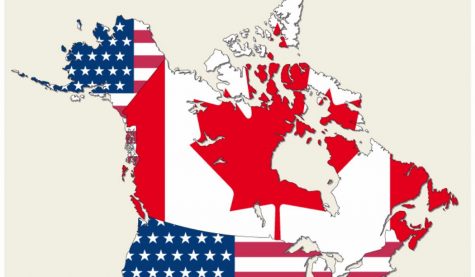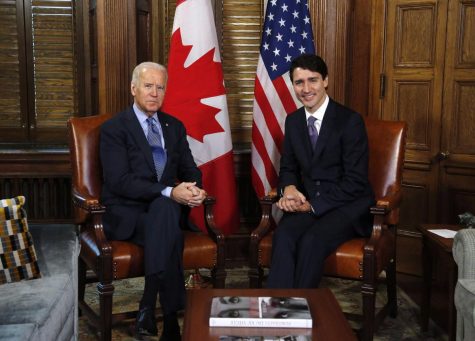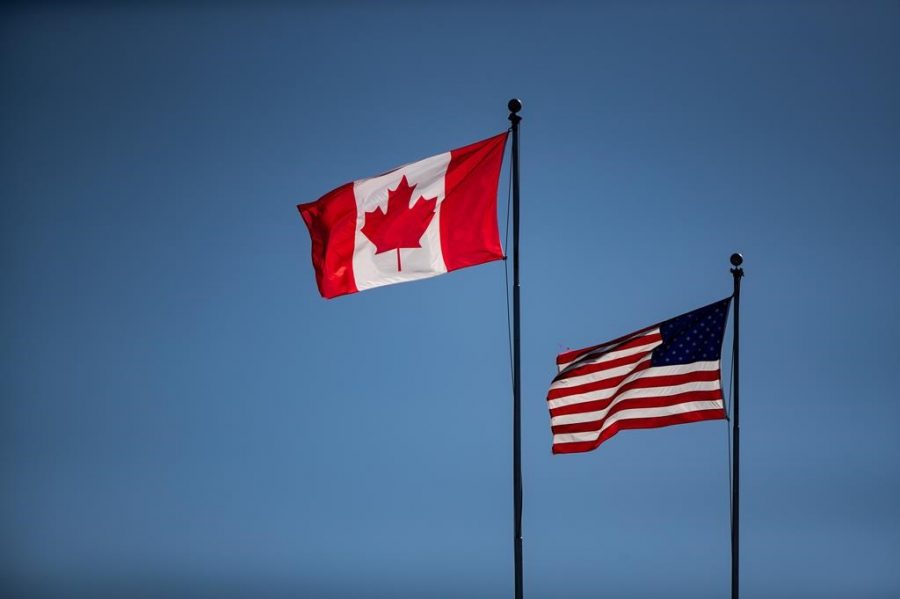The Future of U.S.-Canada Relations
Introduction
It goes without saying that domestic politics and policy decisions made on U.S. soil don’t stop at the border– rather, depending on their significance, major shifts in our own governance permeate across continents and oceans, to allies and adversaries alike. There’s an enduring proverb regarding the United States’ relationship with our peers in the international community: “When America sneezes, the world catches a cold.” And with no other nation is this dynamic more perfectly represented than with Canada, our dependable, frequently neglected neighbor to the north. Over the course of the Trump presidency, we saw a Canadian government constantly coping with relentless speedbumps, unanticipated twists, and, indeed, a fair share of head-on debris. As our own nation struggled with hyperpolarization and undeniably brazen leadership, our allies struggled to keep their footing in the age of “America First.”
 As with other world leaders, including those whom we’ve historically considered our greatest of friends, Former-President Trump didn’t shy away from interpersonal bickering with Prime Minister Trudeau at the cost of international accord. Following a G7 summit in June of 2018, then-President Trump berated Trudeau, labeling him “very dishonest and weak” after the PM’s criticism of U.S. tariffs on Canadian aluminum and steel.
As with other world leaders, including those whom we’ve historically considered our greatest of friends, Former-President Trump didn’t shy away from interpersonal bickering with Prime Minister Trudeau at the cost of international accord. Following a G7 summit in June of 2018, then-President Trump berated Trudeau, labeling him “very dishonest and weak” after the PM’s criticism of U.S. tariffs on Canadian aluminum and steel.
It’s this type of governance which invited international rejoice at the commencement of President Biden’s term. After running on a foreign policy platform of renewed global cooperation and American leadership, Biden presented an opportunity for stable negotiation and coordination between the U.S. and allied powers like Canada or the European Union.
The Pipeline
Since the new administration’s first day in the White House, it’s been clear that mending the close economic and political ties between the two nations is a top priority. But even before taking office, it, too, was evident that the new President’s ascension to power might spell bad news for Canadians hoping for the completion of the Keystone XL pipeline, a massive petroleum transport superhighway spanning from Alberta to Nebraska intended to contribute to the existing international network of Keystone pipelines. Since the project’s inception, it’s been subject to harsh criticism from liberals here in the United States. Environmental activists and scientists opposed promoting drilling in Alberta’s oil sands and the construction of a potentially risky stream of petrol through fragile environmental ecosystems while many Native American and First Nations groups in both the U.S. and Canada viewed the disruption of construction as a threat to their waterways and communities.
 Back in 2015, following years of mounting criticism, Barack Obama placed the final nail in the project’s proverbial coffin, rejecting TransCanada’s application for construction of the project this side of the border. To conservatives both here and in the provinces, this came as a huge blow. Many on the right, Donald Trump included, viewed the construction of the Keystone XL pipeline as a potential gateway for shifting natural gas dependence away from the Middle East and toward North America. This sentiment was shared by both Prime Ministers Stephen Harper and (with slightly diminished enthusiasm) Justin Trudeau.
Back in 2015, following years of mounting criticism, Barack Obama placed the final nail in the project’s proverbial coffin, rejecting TransCanada’s application for construction of the project this side of the border. To conservatives both here and in the provinces, this came as a huge blow. Many on the right, Donald Trump included, viewed the construction of the Keystone XL pipeline as a potential gateway for shifting natural gas dependence away from the Middle East and toward North America. This sentiment was shared by both Prime Ministers Stephen Harper and (with slightly diminished enthusiasm) Justin Trudeau.
However, with Trump’s victory against Hillary Clinton in 2016, interest in the project was reignited. A Republican at the helm after eight years of Democratic executive control opened up the potential for U.S. construction approval. Just months into the President’s term, in March of 2017, these hopes were brought to fruition by the administration’s granting of a Presidential Permit for the assembly of Keystone XL. Despite the White House’s best efforts to complete the pipeline quickly, the project, burdened initially by environmental regulation and eventually by pushback from the Supreme Court, remained incomplete.
That lengthy timeline brings us to 2021.
Death of a Pipeline
On January 20th (inauguration day), making good on a popular campaign promise, Biden halted construction of Keystone XL in his “Executive Order on Protecting Public Health and the Environment and Restoring Science to Tackle the Climate Crisis,” which revoked a slew of XL-related Trump-era executive actions, citing President Obama and the Department of State’s 2015 negative conclusion regarding the long-lasting environmental and economic implications of the undertaking.
As expected, this move drew sharp criticism from Liberal and Conservative politicians across Canada. Jason Kenney, the Premier (if you don’t know what that is, think of him as a governor) of Alberta, made the following statement in response: “Failing an agreement with the American government, we call on the Government of Canada to respond with consequences for this attack on Canada’s largest industry.”
Prime Minister Trudeau, too, expressed regret toward the Biden Administration’s cancellation of the project, commenting “I am, of course, disappointed with this choice. To workers, especially in Alberta and Saskatchewan, who’ve been hurt hard, we will continue to have your backs. We will always stand up for good Canadian jobs.” However, he’s since gone on to dissuade resentment against the new administration for the decision. He said the following in an interview with Chuck Todd on the 28th of February: “It’s fairly clear that the U.S. administration has made its decision on that, and we’re much more interested in ensuring that we’re moving forward.”
What’s Next?
 After taking office, Biden’s first phone call with a foreign leader was to Prime Minister Trudeau on January 22nd. Since then, the two have spoken extensively, evidently eager to move past the potentially disastrous pipeline dispute. In a joint virtual meeting last Tuesday, President Biden reaffirmed his commitment to resetting U.S.-Canada relations post-Trump, stating that “The United States has no closer and no more important friend than Canada. Our nations share close geography and history that will forever bind us together. But our values are even more consequential.”
After taking office, Biden’s first phone call with a foreign leader was to Prime Minister Trudeau on January 22nd. Since then, the two have spoken extensively, evidently eager to move past the potentially disastrous pipeline dispute. In a joint virtual meeting last Tuesday, President Biden reaffirmed his commitment to resetting U.S.-Canada relations post-Trump, stating that “The United States has no closer and no more important friend than Canada. Our nations share close geography and history that will forever bind us together. But our values are even more consequential.”
International pleasantries aside, it’s clear that both administrations are prioritizing the environment as a point of cooperation between the two powers. Looking past the turmoil of Keystone XL’s 13 years in the spotlight, there’s a renewed focus on the countries’ collective role in championing energy sustainability and environmental consciousness in the twenty-first century.
After last week’s Biden-Trudeau virtual conference, the White House issued a roadmap, detailing the Prime Minister and President’s vision for the future of the relationship with an emphasis on COVID-19 response, economic recovery, and environmentally-conscious governance. If you’d like to read the full document it’s available on the WH website.
In Conclusion
Despite long-simmering tensions over the fate of the Keystone XL pipeline, it is clear that the United States and Canada have more interests drawing our countries together rather than pulling us apart. As the U.S. turns back towards globalism and cooperation with our allies, we are sure to see shared progress on multiple fronts as the memory of the failed pipeline fades in the rearview mirror of history. Perhaps this time when America sneezes, the rest of the world will say “Bless you.”

Lorenzo Ruiz, a senior, is a Coeditor-in-Chief. An enthusiast of government and current events, his hobbies include debate, Academic WorldQuest, Model...

